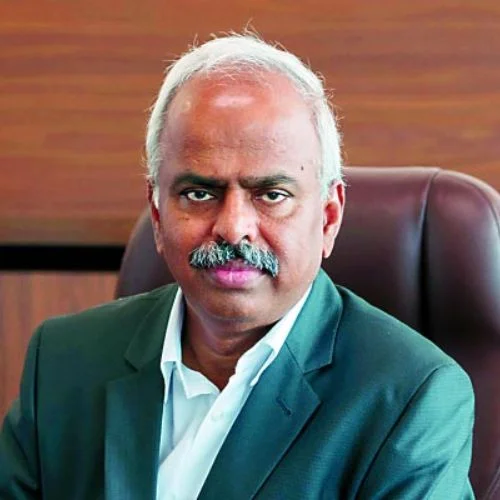According to projections from the power ministry, India’s investments in renewable energy projects would expand by more than 83% to roughly USD 16.5 billion by 2024 as the government focuses on energy transformation to minimize carbon emissions.
This is consistent with India’s ambitious objective of 500 GW of renewable energy by 2030, as well as its determination to decrease total power generating capacity from fossil fuels to less than 50%. India has pledged to achieve net zero emissions by 2070.
However, Union Power and New and Renewable Energy Minister R K Singh has said on several occasions that non-fossil fuels might account for up to 65 percent of power generating capacity by 2030, above the stipulated objective of 50 percent.
In a statement to PTI, Singh said, “India is likely to witness 25 GW of renewable energy capacity addition entailing an investment of Rs 1,37,500 crore (about USD 16.5 billion) in the 2024 calendar year, which would be higher than 13.5 GW with an investment of Rs 74,250 crore (nearly USD 9 billion) seen in 2023.“
Apart from solar and wind energy, India has placed a strong emphasis on green hydrogen to minimize reliance on fossil fuels, particularly diesel, which is necessary for long-distance cars.
India has a diesel-based economy in the sense that diesel fuel is used in the majority of commercial vehicles for passenger and freight services.
The Union Cabinet authorized the National Green Hydrogen Mission in January of this year, with a budget of Rs 19,744 crore.
Later that same month, the Solar Energy Corporation of India (SECI) invited proposals to provide incentives for the yearly production of 4,50,000 tons of green hydrogen and 1.5 GW of electrolyzer manufacturing plants.
Under the Strategic Interventions for Green Hydrogen Transition (SIGHT) Scheme (Mode-1-Tranche-I), 21 enterprises competed for incentives for electrolyzer manufacture of 3.4 GW and 14 companies for green hydrogen generation of 5,53,730 tonnes.
The 21 businesses that competed for the government’s incentives to establish up to 3.4 GW of annual capacity for manufacturing electrolyzers included Reliance Electrolyser Manufacturing, Adani New Industries, L&T Electrolysers, and Bharat Heavy Electricals.
Hild Electric Private, Ohmium Operations, John Cockerill Greenko Hydrogen Solutions, Waaree Energies, Jindal India, Avaada Electrolyser, Green H2 Network India, Advait Infratech, ACME Cleantech Solutions, and Oriana Power were among the other bidders.
Other bidders were Matrix Gas and Renewables, HHP Seven, HomiHydrogen, Newtrace, C. Doctor & Company, Pratishna Engineers, and LiveHy Energy.
ACME Cleantech Solutions, Torrent Power, UPL, GH4INDIA, Aneeka Universal, Sembcorp Green Hydrogen India, Greenko ZeroC, and CESC Projects were among the 14 firms that expressed interest in receiving incentives to establish green hydrogen production plants.
JSW Neo Energy, Welspun New Energy, Avaada GreenH2, Reliance Green Hydrogen and Green Chemicals, HHP Two, and Bharat Petroleum Corporation were among the others.
The National Green Hydrogen Mission aims to make India a worldwide powerhouse for producing this sustainable kind of energy and to develop 5 million metric tons of green hydrogen production capacity per year by 2030.
In the first phase, the mission calls for the establishment of two green hydrogen hubs.
The Ministry of Ports, Shipping, and Waterways has designated three major ports for development as hydrogen hubs: Deendayal, Paradip, and V O Chidambaranar (Tuticorin).
According to Singh, India has 7.8 million tons of green hydrogen capability at various phases.
The Rs 17,490 crore Strategic Interventions for Green Hydrogen Transition (SIGHT) project would catalyze the generation of green hydrogen and electrolyzers, build the green hydrogen ecosystem, and allow industrial decarbonization.
Vineet Mittal, Chairman of the CII Taskforce on Green Hydrogen and Co-Chairman of the CII Renewable Energy Council said that India’s commitment to environmental sustainability is consistent with the worldwide movement toward green hydrogen and its derivatives.
“However, meeting the additional renewable energy demand and establishing a robust ecosystem for green hydrogen and green ammonia will be pivotal in 2024.” Using renewable energy potential, India may emerge as a manufacturing center to fulfill the rising need for green hydrogen derivatives, according to Mittal, also the Chairman of Avaada Group.
Rahul Munjal, Co-Chairman of the CII Renewable Energy Council, said that the prognosis for renewable energy in 2024 is favorable, with ongoing investment and technical improvements, notably in renewable energy and battery storage.
Munjal is also the Chairman and CEO of Hero Future Energies.
A comprehensive vision stated in the Central Electricity Authority (CEA) study on Optimal Generation Mix by 2030 targets 292 GW of solar, 100 GW of wind, and 18 GW of hydro, providing abundant opportunity for different industry investments.
“To achieve the goal of 292 GW solar installations and 100 GW wind installations by 2030, REIAs (Renewable Energy Implementing Agencies) should issue large-scale tenders (up to 5 GW) to maximize the execution capabilities of developers,” said Shekhar Dutt, Director General of Solar Power Developers Association (SPDA).
He also advocated for major industrial sectors to be required to meet Green Hydrogen Consumption Obligations (GHCOs) to boost green hydrogen utilization.
According to Girishkumar Kadam, Senior Vice President and co-group Head – Corporate Ratings at ICRA, installed renewable energy capacity in India, excluding big hydro, is expected to expand to above 170 GW by March 2025, up from 132 GW in October 2023.
Furthermore, he said that the subsequent capacity expansion is projected to be backed by a major improvement in bidding activity in the current fiscal, with over 16 GW projects bid out so far and another 17 GW bids under consideration by the central nodal agencies.
This is consistent with the government’s 50 GW annual bidding trajectory set in March 2023, he noted.














